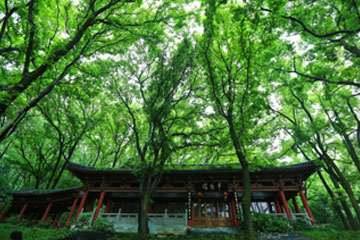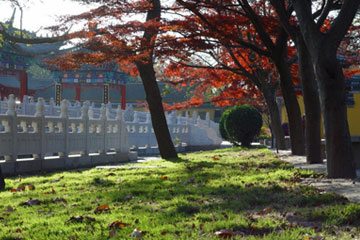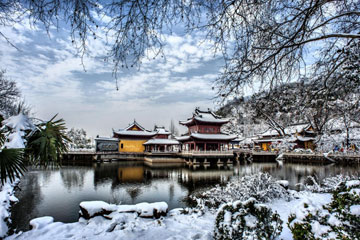-

Ringing the Bell for Blessing on New Year's Eve at the Jinshan Temple
Time: December 31 - January 1 of the next year (09:00 pm – 0:00 am)
Location: Zhenjiang Jinshan Park
Activities: The traditional custom of ringing the bell at Jinshan Temple on New Year's Eve to usher in the New Year originated from the Tang Dynasty. Since ancient times, this tradition has lasted more than 1,000 years. On the New Year's Eve, more than 10,000 domestic and overseas tourists attend the grand bell-ringing ceremony every year. Visitors take a night tour of Jinshan Mountain, watch folk art performances, and attend the tourist commodity exhibition. They also strike the bell one by one, pray for a safe and sound new year, and taste vegetarian food at the Foyin Restaurant.
-

Maoshan Mountain Xiangqi Temple Fair
Time: It usually lasts nearly 3 months from the 24th day of the 12th lunar month when people offer sacrifices to the Kitchen God to the "return day of Damao Jun" on the 18th day of the third lunar month of the next year.
Location: Jurong Maoshan Mountain
Activities: Mountain-climbing, pilgrimage, folk art performances, local snacks, watching the Three Strange Things of the Maoshan Mountain, etc.
-

Soy Sauce and Vinegar Culture Festival
Time: January and February
Location: Hengshun Vinegar Factory
Activities: The Soy Sauce and Vinegar Culture Festival invites Zhenjiang people to the Activities “You Buy Soy Sauce and I Give You a Pot (Good Fortune)”. Thousands of barrels of “Baishan Soy Sauce” make “Hengshun Flavor” spread in Jiangsu Province and people share with each other the flavor of the “Capital of Vinegar”. Therefore, the Spring Festival folk customs thrive through inheritance from generation to generation.
-
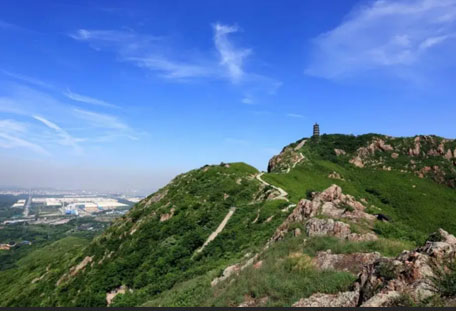
Huangming Cultural Tourism Festival
Time: April
Location: Chui Mountain
Activities: The Huangming Festival started in the Qin and Han Dynasties, rose in the Tang and Song Dynasties, and flourished in the Ming and Qing Dynasties and even in modern times. It has become one of the grandest mountain-climbing folk events in the Yangtze River Delta. People climb to the top of the Baoen Tower to enjoy spring outings and pray for peace.
-
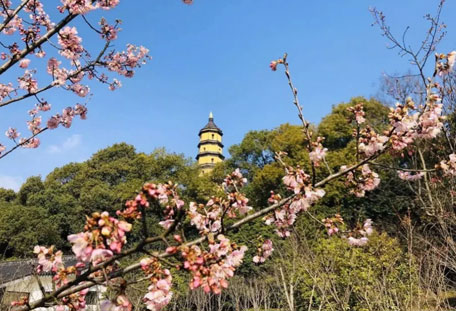
Zhenjiang Plum and Cherry Blossom Festival
Time: Mid-April
Location: Zhenjiang Plum and Cherry Blossom Park
Activities: Visitors appreciate the beauty of plum and cherry blossoms, and plant plum and cherry trees. Art exchanges between Chinese and Japanese artists, art shows, potted landscape displays as well as cuisine and cooking skills exchanges.
-

Jiaoshan Osmanthus Festival
Time: September and October
Location: Zhenjiang Jiaoshan Park
Activities: Jiaoshan Osmanthus Park covers an area of more than 80 mu (5.3 hectares) and grows 15 varieties of osmanthus with more than 6,000 plants. People can enjoy calligraphy, painting, and seal cutting exhibitions, watch flower arrangement performances, learn about knowledge of osmanthus, participate in lantern riddles, and taste a series of osmanthus food.
-

China Zhenjiang Jinshan Culture and Arts and International Tourism Festival
Time: October and November
Location: Scenic spots of Zhenjiang
Activities: Zhenjiang City’s superior cultural and artistic tourism resources are integrated to boost consumption in cultural and artistic tourism. The city’s culture and arts, fascinating landscapes as well as best cuisine are displayed comprehensively to enhance its popularity, reputation and influence.



